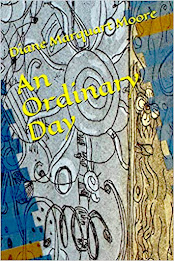I remember arriving in New Iberia in January, 1964, and to my dismay, rain fell steadily almost the entire month. I looked out at the gray sheets of rain as I drove over the old bridge arching above the muddy Bayou Teche and wondered if I’d ever like living in the area. However, by late February, the city had begun to come alive with azaleas. The sight of these bushes with their vari-colored blossoms inured me to the Queen City of the Teche, and every year I marvel at the few azalea bushes blooming in my yard, wondering how they have thrived without fertilizer of any kind or expert pruning.
People in Oriental cultures love azaleas. The Chinese poet Tu Fu featured the azalea in his poetry, and the Japanese sponsor an azalea festival in honor of the Tsutsuji azalea in Tokyo during early April each year. In China, one meaning for azalea is womanhood – to the Chinese the plant also denotes thoughtfulness and pensiveness through its designation as “the thinking home bush.”
 Tu Fu wrote a story entitled “Sea of Blood Red Azaleas,” using the azalea as a symbol of homesickness and exile, and I know I'll ponder this meaning when I return in mid March to The Mountain at Sewanee, Tennessee for a Spring and Summer stay. Tu Fu’s poignant allusion to the azalea is immortalized in “Alone, Looking For Blossoms Along the River,” the last stanza reading:
Tu Fu wrote a story entitled “Sea of Blood Red Azaleas,” using the azalea as a symbol of homesickness and exile, and I know I'll ponder this meaning when I return in mid March to The Mountain at Sewanee, Tennessee for a Spring and Summer stay. Tu Fu’s poignant allusion to the azalea is immortalized in “Alone, Looking For Blossoms Along the River,” the last stanza reading:“I don’t so love blossoms I want to die, I’m afraid,
Once they are gone; of old age still more impetuous,
And they scatter gladly, by the branchful. Let’s talk
Things over little buds – open delicately, sparingly.”
And this Haiku from the Japanese poet, Matsu Basho, writing in the 17th century:
"rock azaleas
have they been dyed by the red
tears of the cuckoo."
The photographs in this blog are of azaleas in my yard that have been blooming for three weeks now.













No comments:
Post a Comment